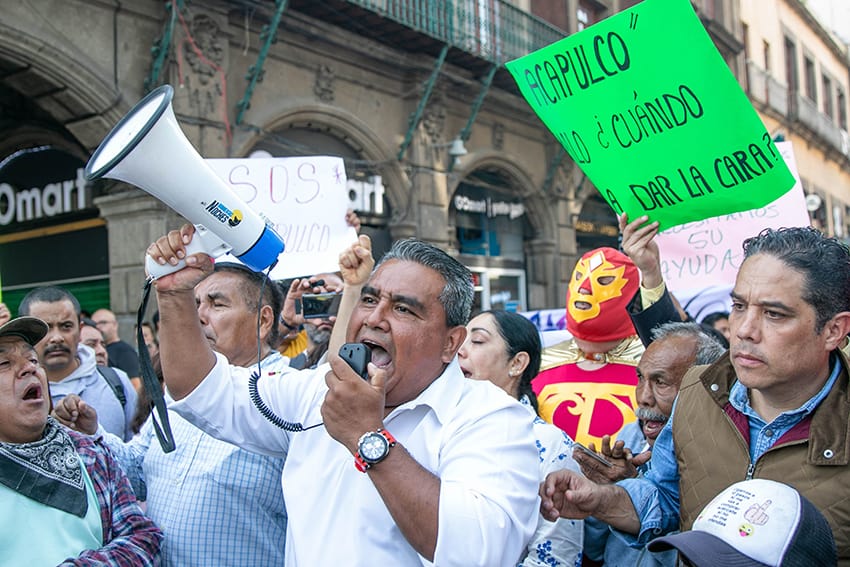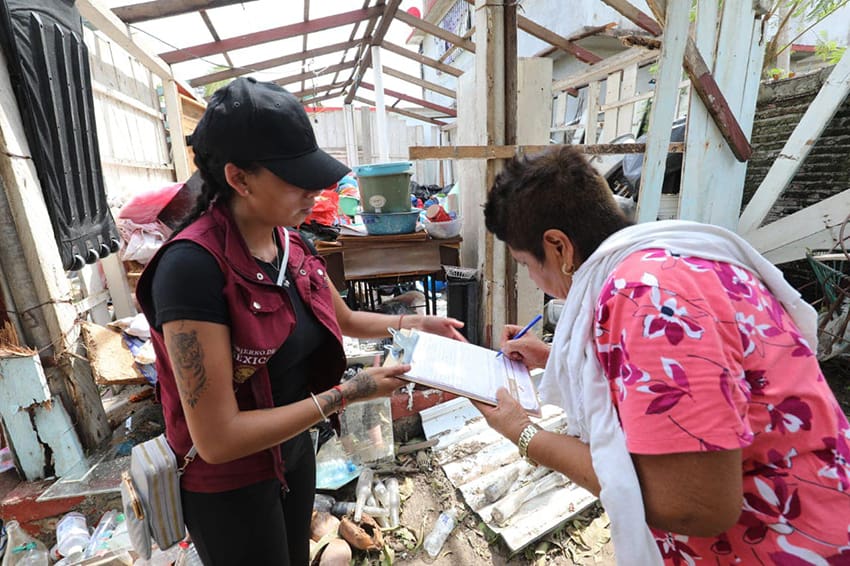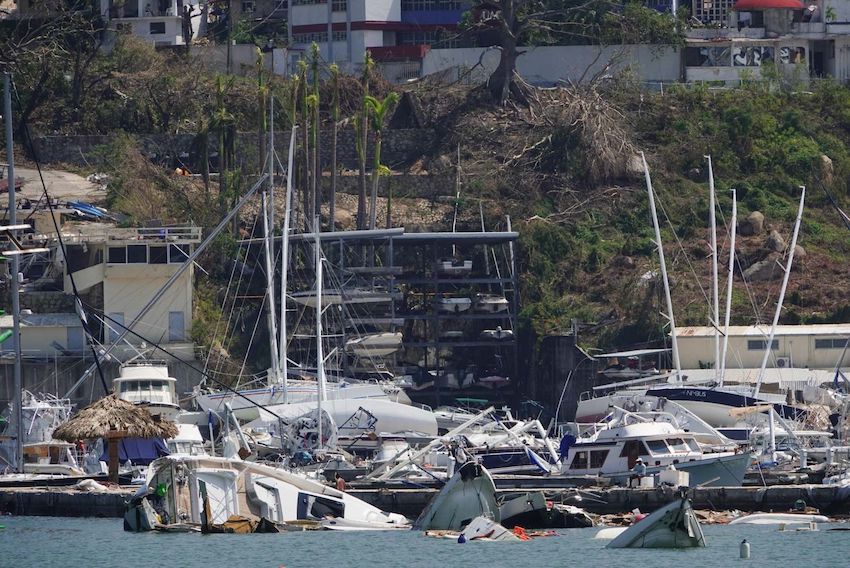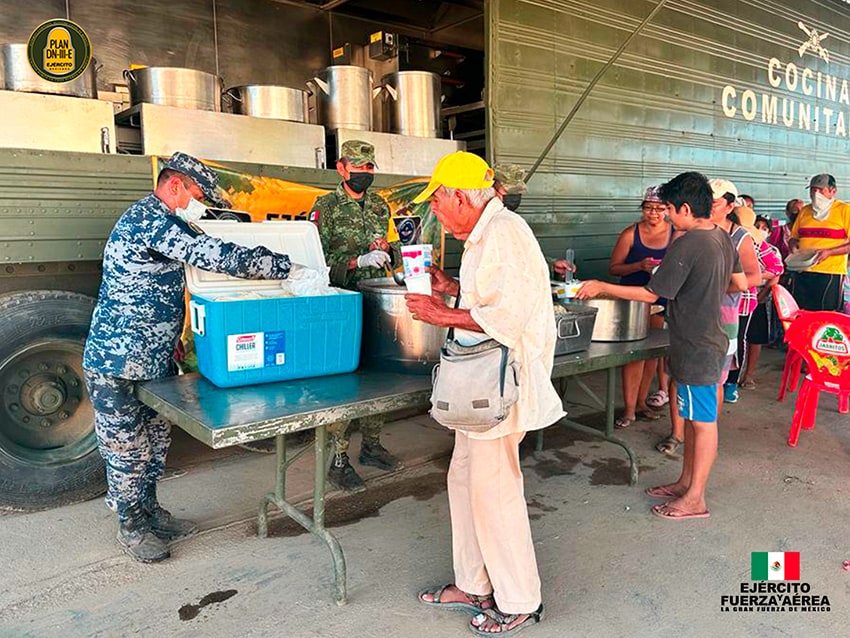Death toll questioned as Acapulco enters next phase of recovery

The recovery from Hurricane Otis, which devastated Acapulco when it made landfall on the Guerrero coast on Oct. 25, was a dominant topic at President López Obrador’s morning press conference on Monday. Here’s what you need to know.
100 people dead or missing
López Obrador said that the confirmed number of hurricane fatalities was 47, with 53 additional people classified as missing.
The death toll is one fewer than the number reported by the Guerrero Attorney General’s Office (FGE) on Sunday. López Obrador didn’t explain the reason for the discrepancy.
The FGE said Sunday that the body of a young girl, Angelly “N,” had been found in a community near Acapulco after an “exhaustive” search, and thus increased its death toll to 48.
One of the leaders of a group of Acapulco residents who departed the city on Sunday to travel to Mexico City to protest the government’s disaster response claims that authorities are not acknowledging the true human toll of the hurricane.

“The government wants to minimize the tragedy and hide the number of deaths, missing people and victims,” said Ramiro Solorio, who has been active in local politics in Acapulco for years.
According to the El País newspaper, doctors have said that many hurricane-related deaths at hospitals haven’t been included in the official death toll, while the relatives of hundreds of people who were at sea when Otis made landfall say they are unaccounted for.
Government aid reaching residents
López Obrador said that an average of 40,000 food packages are being distributed on a daily basis to residents of Acapulco and the neighboring municipality of Coyuca de Benítez.

He also said that 50,000 hot meals are being served every day at community kitchens set up by the military. The distribution of 250,000 packages of household goods, including a bed, a stove and a fridge, has begun, López Obrador told reporters.
The government announced a 20-point recovery plan for Acapulco and Coyuca de Benítez last Wednesday.
Damage census continues
López Obrador said that the Welfare Ministry had visited 172,102 homes to assess damage as of Sunday night.
According to the recovery plan, all households will receive 8,000 pesos (about US $450) to purchase paint and cleaning supplies. Owners of houses that were damaged by the hurricane will receive an additional 35,000-60,000 pesos depending on the severity of the damage.
At least 35 Acapulco hotels to reopen by March or April

“We’re going to make a joint effort so that at least 35 hotels are operating by March or April of next year,” López Obrador said a day after holding discussions with Acapulco hoteliers.
The reopening of the hotels will allow the 2024 Tianguis Turístico — Mexico’s largest tourism trade fair — to go ahead in Acapulco next April.
López Obrador said that Carlos Slim, Mexico’s richest person and the owner of the Calinda Beach Hotel, is among the Acapulco hoteliers who committed to reopening by April. He also praised Slim for the assistance he has provided in the wake of the disaster.
Approximately 80% of Acapulco hotels sustained damage when Otis made landfall as a Category 5 storm in the early hours of Oct. 25. The repair bill is likely to be in the billions of dollars.
Some hotels are set to open much sooner. López Obrador said that the owner of the Las Brisas Hotel is expecting to have 75% of rooms open in December.
José Medina Mora, president of the Mexican Employers Federation (Coparmex), said last week that the organization he heads will help tourism sector workers find temporary jobs in other destinations around the country.

With luck, a good number will be back working in Acapulco during Semana Santa, the week leading up to Easter Sunday, which is March 24-30 next year.
Declaring a disaster in 47 Guerrero municipalities was a “mistake”
“There was a mistake, the [national] Civil Protection coordinator accepted it,” López Obrador told reporters.
A notice appeared in the federal government’s official gazette last Thursday to formally make a “natural disaster declaration” in 47 Guerrero municipalities. However, a “clarifying note” was subsequently published, reducing the number of severely affected municipalities to two.
López Obrador said Monday that only Acapulco and Coyuca de Benítez qualified as disaster zones.
“The hurricane basically [affected] these two municipalities,” he said.

López Obrador reiterated that “there is no limit” to the amount of money the government will spend to support victims and “rebuild economic and tourism activity” in Acapulco.
The government plan outlined last week has a 61.3-billion-peso (US $3.5 billion) budget, but Coparmex said last week that it believes between 200 and 300 billion pesos will be required.
A strong security presence
López Obrador noted that 20,000 soldiers, marines and National Guard officers remain on the ground in coastal Guerrero, where they are assisting the recovery efforts and providing security.
The number of National Guard personnel permanently deployed to Acapulco is set to double to 10,000. The resort city — described by The Washington Post as Mexico’s murder capital in 2017 — has been plagued by crime and violence in recent years.
Looting was a widespread problem during the first days after Otis hit Acapulco, but the situation has improved, and some of the city’s restaurants and bars reopened over the weekend.
With reports from El Universal, Milenio, Reforma and El País
Source: Mexico News Daily

